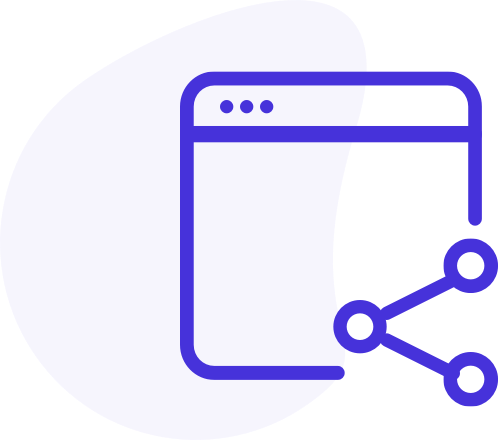We’re all familiar with the sales funnel — also known as the purchase or marketing funnel. We know it represents the journey that potential customers go through before making a purchase.
But are we all familiar with the changing nature of that customer journey and the extra care that needs to be put in place when planning and executing outbound sales messaging?
Understanding the new customer journey
Longer buying cycles makes it imperative to keep prospects and all the relevant members of the buying committee engaged in longer journeys, with more interaction points that demonstrate value and drive impact along the way.
Marketing and sales teams are discovering that they can increase win rates by aligning journeys for individual personas.
A customer journey that portrays a linear series of interactions is much more difficult to predict than it was a decade ago.
Here’s an example of an older customer journey that was replied upon for years:
- customer sees ad on the side of a bus,
- looks up your company on Google,
- is directed to landing page,
- then provides their email address for white paper access
But this is no longer a reliable journey — customers are far more savvy and fussy now. These days, sales efforts need to be directed toward ideal customers defined by carefully-constructed personas.
Enticing prospects requires an iterative process to not only attract, but also engage and convert leads. And this engagement needs to happen earlier than ever before. It’s not enough to simply start tracking a lead when they first interact with your service page; now it’s imperative to begin engagement well before they even know your company exists.
Today, when identifying how to build an outbound sales strategy properly, locating ideal customers, offering custom-tailored solutions, and creating immediate demand is the new status quo.
And creating reliable customer personas is one of the first major steps in this process.
The importance of psychographics and data analytics
Here’s a lightbulb moment for you: until you have a reason to make a purchase, why would you ever search for a product? Would you go looking for Band-Aids if you didn’t have a paper cut?
If your outbound lead generation team cannot identify, address, and then solve prospect pain points, then they will have no need for you or your services.
At BitWide, we don’t shy away from exploring the pain; in fact, we embrace it. Pain, after all, is part of the road to gain. And marketing materials need to resonate with specific pain points, so that the leads you attract are more likely to appreciate the relevance of what you’re offering, and open up their cheque books.
BitWide’s outsourced lead generation and sales experts build a pipeline to narrow in on leads who specifically feel the pain, help them understand how it affects them, and spotlight how you can help them.
The right outsourced lead gen team will take the time to build proper personas and also help target the specific job role where the identified pain points are most present and persistent.
Generating persona profiles with the right data and tailoring marketing content that attracts them ensures alignment and all but guarantees growth at scale. When working an outbound sales team, this data — specifically demographics, firmographics, and psychographics — is imperative and should be part of the earliest stages of the sales outreach strategy.
Demographics: To build a persona, you need details like age, job title, gender, income level, education, and even what a prospect shares on their social channels.
Firmographics: Company Size, industry, geographical location, company age, ownership structure, tech stack, as well as profit margins also contribute to a proper persona and eventual ICP.
Psychographics: Interests, hobbies, values, attitudes, lifestyle, and personality traits also contribute to the building blocks of a proper persona. Psychological and behavioral aspects, such as understanding the persona’s main goals, aspirations, and challenges will help marketing teams understand pain, to help you highlight the gain your product or service brings.
Behavioral data can be acquired numerous ways, but they are most often revealed during macro and micro shifts that can be accessed through sources such as company blogs and the LinkedIn pages of key staff, as well as third party data providers.
There are so many organizational signals that can be leveraged, including:
Mergers & Acquisitions
New hire announcements & other staff adjustments
ZoomInfo Scoops
LinkedIn Sales Navigator information
Crunchbase insights, and even
Google News updates
Remember: organizations pay, but individuals buy (and they do so for selfish reasons). This is why bringing in leads who have been targeted for their individual needs, and who are actively seeking solutions related to your niche, increases the efficiency and effectiveness of the entire lead qualification process.
Why personalized communications reduce information overload
Personalization is paramount in sales, and the right outbound lead generation specialist will create messaging that addresses the specific challenges, concerns, and even interests of your target prospects. This will lead to warmer leads, making the job of eventually closing that lead much, much easier.
Personalization shows that you understand the customer’s needs and preferences. It helps build a stronger connection and fosters trust between the salesperson and the prospect, as well.
Personalized messaging creates a roadmap to communications success, and this efficiency keeps overload to a minimum. It also makes your leads feel listened to and important, and humanizing interactions is a surefire way to prime a lead to make a purchase.
Personalized communication makes interactions feel less transactional. When humanizing the sales process, you make customers feel valued and understood as individuals. Personalized emails or messages tend to have higher open rates and response rates compared to generic, mass-produced messages.
Customers are more likely to engage when they feel the communication is directly relevant to them. And you did the work on the data-driven insights, so why waste the opportunity to apply them in your messaging?
Final thoughts
In essence, personalized communication in sales is not just about addressing a customer by name; it’s about understanding their unique needs, preferences, and pain points, and tailoring the sales approach accordingly.
A focus on personalization positively impacts how customers perceive a brand, positioning it as customer-centric and attentive to their needs. This not only helps you stand out from the competition, but also builds brand loyalty.
Once you understand the customer journey by focusing on the situations facing your prospects, you can then customize your messaging and shine a positive spotlight on them.
Once you do that, there’s little standing between you and sales success.
We’re always happy to share our insight here at BitWide, and if you’d like to chat, we’d love to hear from you today.











